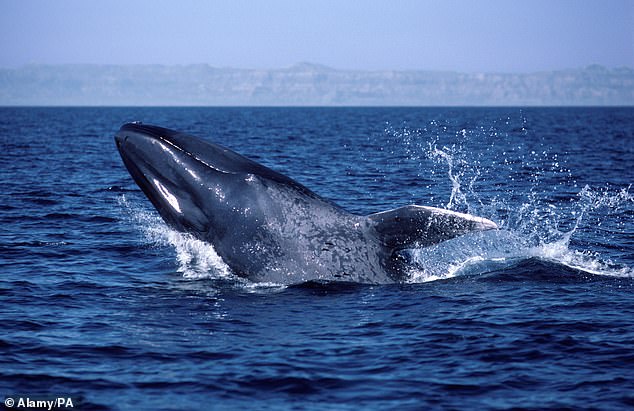Dark silence looms over blue whales' mysterious disappearance

Unexplained Silence of Blue Whales Sparks Scientific Concern
A growing mystery has emerged in the oceans, as many blue whales have gone mysteriously silent, prompting concern among scientists. Researchers have been studying the impact of human activity on marine life through acoustic recordings captured off the coast of Monterey Bay, California. These recordings have revealed a significant drop in blue whale songs over the past six years, with a nearly 40% decline observed.
The research team discovered that major heat waves had affected the region, leading to the proliferation of toxic algae and the depletion of the whales' primary food source. John Ryan, a biological oceanographer at the Monterey Bay Aquarium Research Institute, explained the severity of the situation, stating that it was the most widespread poisoning of marine mammals ever documented. He described the period as particularly challenging for whales.
The marine heatwave known as The Blob began in 2013 and spread across thousands of miles by 2016. This event caused ocean temperatures to rise by more than 4.5°F, significantly impacting krill and anchovy populations. Ryan likened the situation to "trying to sing while you're starving," highlighting the dire consequences for these marine creatures.
With krill, a crucial food source for many marine species, being drastically reduced, scientists warn that this represents a larger crisis within the oceans, exacerbated by climate change. Kelly Benoit-Bird, a marine biologist at the Monterey Bay Aquarium, emphasized the ecosystem-wide effects of these marine heatwaves. She noted that if whales cannot find food and can travel the entire West Coast of North America, the implications are vast and significant.
While the study focused on whales off the coast of California, researchers have observed similar silence across the South Pacific, parts of the Southern Ocean, and Argentine waters. Blue whales rely heavily on sound for communication, and scientists have used underwater microphones, known as hydrophones, to monitor their activities. These devices capture the deep, low-frequency moans and songs that blue whales use to find mates, navigate, and stay connected with their group.
The new study collected recordings from a 32-mile-long cable that runs along the seafloor from the California coastline, ending in a two-inch metal cylinder located about 3,000 feet below the surface. Ryan reflected on the importance of these recordings, noting that they help understand human impacts, nature, and the balance between them.
Humpback whales, which have a more varied diet and are adapted to harsh conditions, maintained their usual songs. In contrast, blue and fin whales, which primarily feed on krill, showed a decrease in their songs compared to previous years. The team attributed this change to The Blob.
In normal years, krill arrived in such large numbers that fishing nets turned pink from their sheer volume. However, during the heatwave, krill almost disappeared. Benoit-Bird explained that the system changes significantly during these hot years, resulting in a lack of krill and leaving animals that depend solely on krill in a difficult position.
Not only did krill numbers decline, but their behavior likely shifted as well. With the usual upwelling disrupted by heat, krill scattered, making it even harder for whales to feed. Ryan noted that the whales were spending all their energy searching for food, leaving little time for singing. This indicates that those years were incredibly stressful for the whales.
In the waters between New Zealand's islands, scientists tracking blue whales from 2016 to 2018 also encountered an eerie silence during the years of The Blob, similar to what was recorded off California's coast. Dawn Barlow, an ecologist at Oregon State University's Marine Mammal Institute and lead author of the study, mentioned that their focus was on understanding blue whale ecology, but they ended up studying the effects of marine heatwaves unintentionally.
Barlow and her team used underwater recorders in the South Taranaki Bight to monitor two types of blue whale calls, including low-frequency D calls linked to feeding and rhythmic songs associated with mating. During unusually warm years, they heard fewer D calls in the spring and summer, indicating less foraging. That fall, song intensity dropped as well, pointing to reduced efforts to reproduce.
Barlow explained that when there are fewer feeding opportunities, whales put less effort into reproduction. She emphasized that the silence is a warning, noting that blue whales serve as sentinels of the ocean's health. Their presence and activities provide valuable insights into the state of the ecosystem.

Comments
Post a Comment